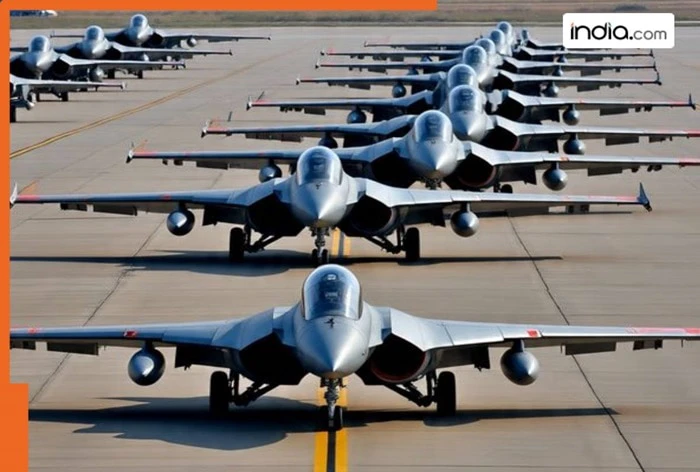Fighter jets fly high up in the sky, where the air is extremely cold and the rays of the sun are much stronger than on the ground. In such conditions, the body of the jet can get damaged quickly if it is not protected.
To prevent this, a special kind of paint is used and this paint works like a shield, protecting the jet from rust, sunlight, and moisture. It helps the jet stay strong for a longer time and also reduces the cost of repairs and upkeep.
Paint that makes fighter jets hard to spot
In today’s air battles, staying hidden from the enemy is a big win. To help with this, many fighter jets are covered with special radar-absorbing paint. This paint works by absorbing the radar waves instead of bouncing them back. As a result, the jet becomes much harder to spot on enemy radar screens.
With this coating, a jet’s radar visibility (called its “signature”) is reduced by nearly 97 per cent. This technology is used in many advanced jets like Turkey’s new KAAN, and also in aircraft like the Rafale, F-22, and F-35. It helps them avoid being seen by enemy radar.
Why most fighter jets are grey?
The grey color isn’t just about looks, it is part of the strategy. Grey helps the jet blend into both the sky and the ground, making it harder to spot with the naked eye.
Jets like the F-5 Tiger II use two or three shades of grey to better match different backgrounds. In war, this kind of visual camouflage is the first line of defense against being seen and targeted.
How paint helps fighter jets avoid heat-tracking missiles
The hotter a fighter jet gets, the easier it is to spot using thermal cameras or heat-seeking missiles. That’s why new types of paint, like low-emissivity topcoats, are now being used. These special coatings help keep the surface of the jet cooler, which lowers its thermal signature, making it harder for enemy infrared sensors to detect.
Lighter paint saves fuel and boosts speed
In 2025, UK’s EasyJet airline used a new lightweight paint that made each airplane about 27 kg lighter. This small change could save up to 1,200 tons of fuel across their entire fleet every year.
In fighter jets, though, lightweight paint is not just for saving fuel, it’s used to improve performance. A lighter jet faces less air resistance (or drag), so it can fly faster, farther, and with better agility during missions.
Outsmarting modern sensors
Today’s enemy technology goes far beyond radar. It also includes infrared, ultraviolet, and even multi-spectral sensors that can detect heat, light, and more.
To stay hidden, modern fighter jets are now using anti-thermal and multi-spectral coatings. These advanced paints reflect light and heat in special ways to confuse different types of sensors, which helps the jet remain unseen from all angles.
Fighter jets follow strict painting rules
Every air force in the world has its own painting rules for fighter jets. It’s not just about choosing a color, jets must also have safety markings, maintenance codes, and warning signs painted in the right places.
If a jet doesn’t follow these military painting standards, it might not be allowed to fly. In some cases, the jet can even be grounded or suspended until it meets the rules.
Why most fighter jets are painted grey
The grey color you see on fighter jets isn’t just for style, it’s carefully chosen for many smart reasons:
- It reflects sunlight evenly, so the jet doesn’t get too hot.
- It’s less visible to the human eye, making it harder to spot in the sky.
- It helps reduce visibility on radar systems too.
